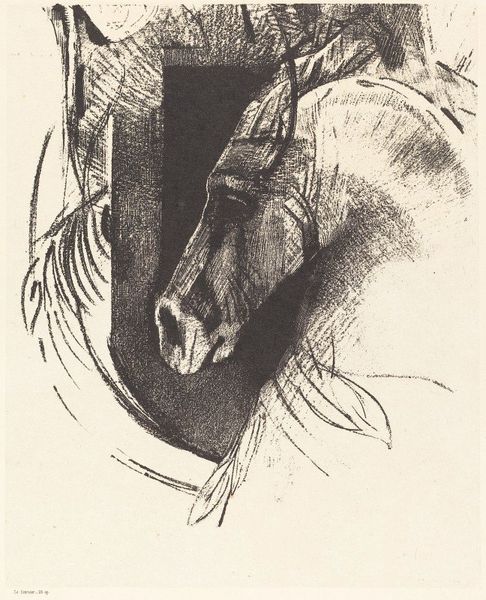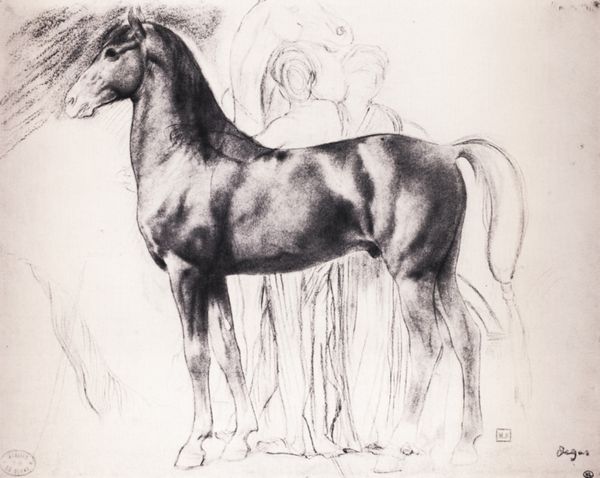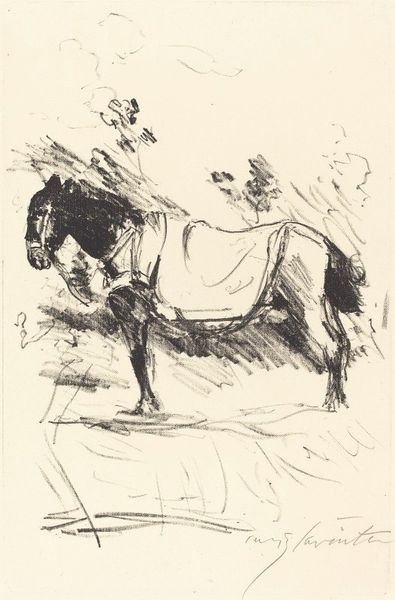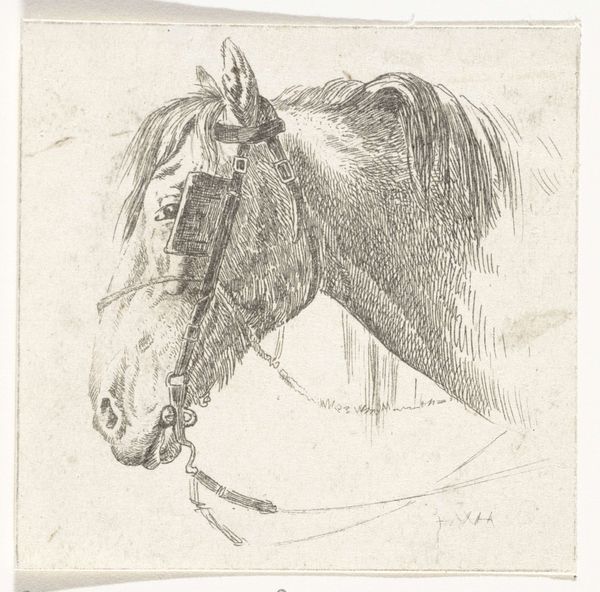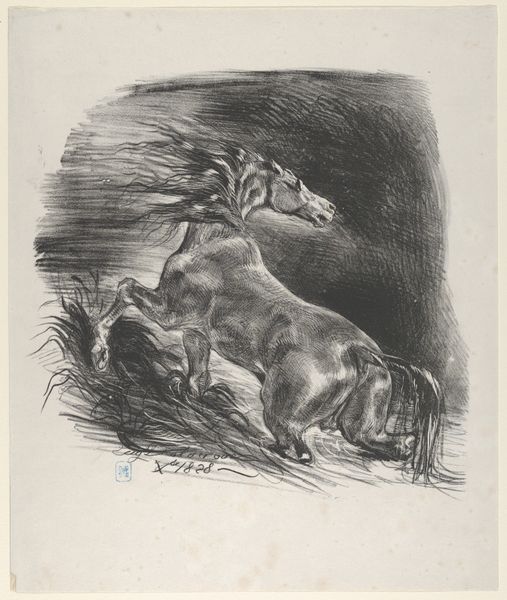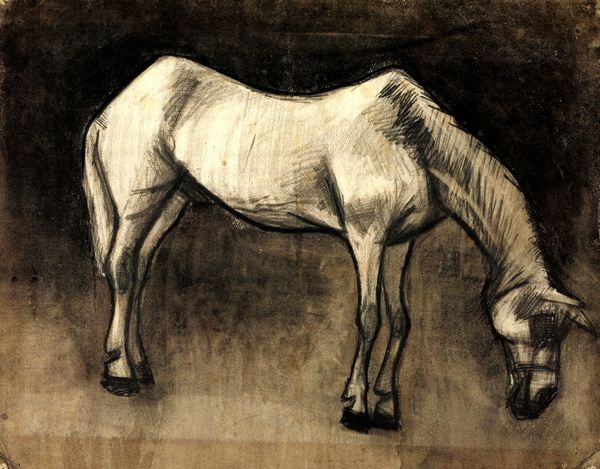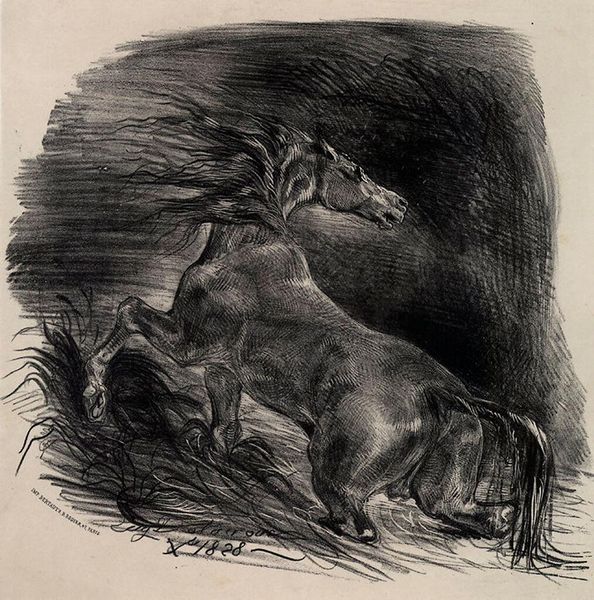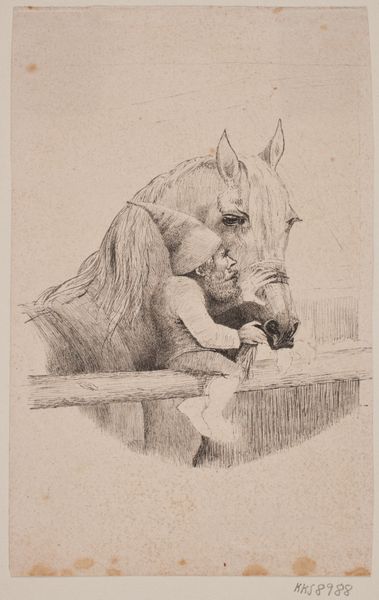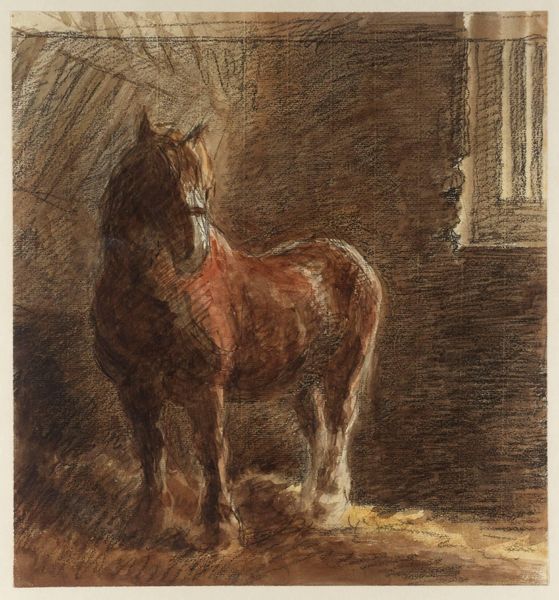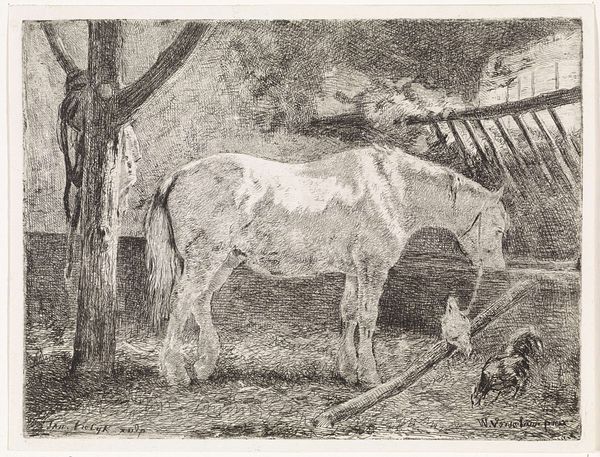
drawing, graphite, charcoal
#
portrait
#
pencil drawn
#
drawing
#
pencil sketch
#
charcoal drawing
#
charcoal art
#
pencil drawing
#
horse
#
surrealism
#
graphite
#
charcoal
#
charcoal
#
graphite
Copyright: Public domain
Editor: Here we have "The Horse," a charcoal and graphite drawing by Frank Eugene. It looks like the artist captured a horse in motion, or maybe just having a rest. What strikes you most when you look at it? Curator: What grabs me is the animal's presence in relation to the history of labour, domestication, and control. How do you interpret the artist's choice to portray a harnessed horse? Does the harness signify the horse’s subjugation to human will and industrialization, or something else? Editor: That's a perspective I hadn’t considered. I initially focused on the form, but thinking about it now, the harness is pretty unavoidable and maybe not incidental at all. Curator: Exactly! Eugene was working during a period of significant industrial and social change. So, we can analyze how "The Horse" contributes to evolving debates about our relationship with the natural world and animals’ roles in society, right? Think about the history of horses, and how intertwined they were with class structures. What statements do you think can be made? Editor: That is helpful to view the artwork in the context of industrial changes. This adds layers of meaning beyond a simple depiction of a horse. Maybe the artist is trying to question our own reliance on machines and question progress at all costs? Curator: Precisely! Thinking about this era encourages us to understand the visual arts and reflect on ethical questions relating to technology and human relations. Editor: This makes me wonder about the intended audience for this kind of drawing. It makes me rethink the role art plays in questioning the dominant narratives. Curator: It’s all about making connections!
Comments
No comments
Be the first to comment and join the conversation on the ultimate creative platform.
